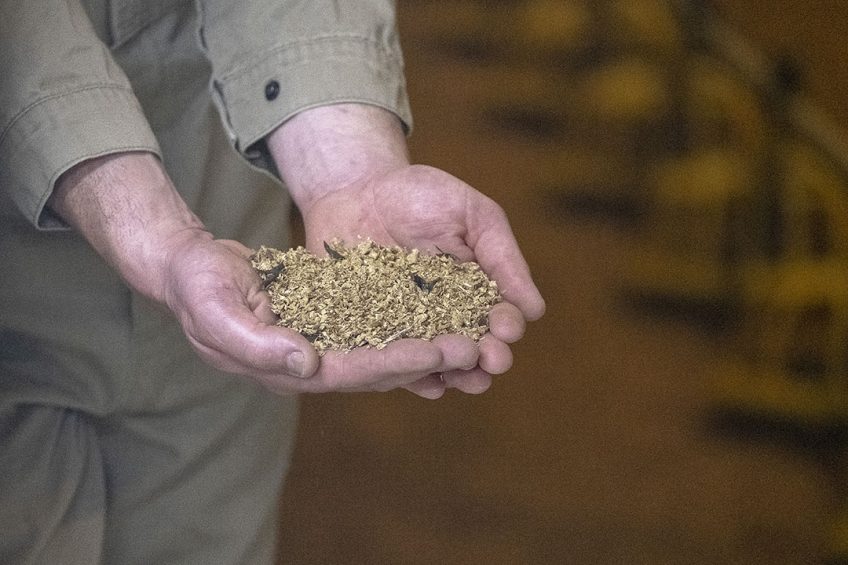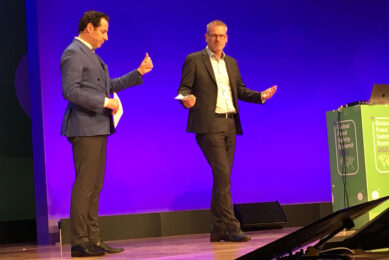Reducing the risk of salmonella re-contamination in feed

Deploying risk mitigation strategies across the feed-to-food production chain can help assure safe animal feed and poultry production. However, certain processes, such as the desiccation (drying out) of salmonella cells, can circumvent routine cleaning and hygiene practices.
During certain phases of feed production, salmonella cells may become dormant only to re-activate later in the production process. The inability to detect dormant salmonella cells may undermine routine hygiene checks and threaten feed safety. This risk demands strategies that go beyond hydrothermal treatment. Research has shown that preservation strategies, including the application of potent buffered and synergistic blends of organic acids and surfactants, can significantly reduce contamination risk during animal feed processing.
Feed contamination can occur at any stage of poultry production, including in:
- raw materials,
- transport,
- warehousing,
- processing, or even
- bird housing.
Each stage presents its own risks. For example, mitigation of microbial risks is necessary in the early stages of the feed-to-food chain to avoid cross-contamination and ensure safe food for human consumption. Later in the production process, operation hygiene, storage protocols and good on-farm management practices are other critical points where microbial contamination could occur.
When the conditions for microbial growth are present at any stage of the feed chain, Enterobacteriaceae like salmonella can threaten both animals consuming contaminated feed and humans consuming the animal-based product. Such a threat is dormant salmonella caused by desiccation. This ‘drying out’ process can enable salmonella to remain undetected during routine checks and lead to a wrongful conclusion that feed materials and production lines are free from salmonella.
Re-contamination risk
Increasing temperature and humidity can activate dormant salmonella and other Enterobacteriaceae. Temperature and humidity variations can present a risk at any stage of the production process, including raw material storage, grinding and production stops; allowing for the metabolism of dormant salmonella and other micro-organisms to reactivate and proliferate. Increases in temperature and humidity can enable nutrients to become accessible during the grinding process; effectively opening up a point of access for micro-organisms to enter, multiply and cross-contaminate feed production processes. Figure 1 shows the increase in the Enterobacteriaceae colony-forming unit load at the pre and post-grinding stages.
Figure 1 – Rapid increase of enterobacteria due to grinding

Detrimental effects
If micro-organisms succeed in accessing nutrients during the grinding process, nutrient degradation will occur, compromising the quality of the feed. As nutrients become degraded, micro-organisms consume the nutrients making them unavailable for further consumption, thus decreasing the nutritional value of the feed. In corn, for example, the loss in nutrients caused by micro-organisms through nutrient degradation has been estimated at 7% of its total weight. At the same time, an increase in temperature and humidity also leads to an immediate peak in mould, yeast and Enterobacteriaceae colony-forming units, posing a safety risk.
Tools for mitigating re-contamination risks
There are several solutions which may reduce the risk and growth of micro-organisms like salmonella. The most common of these is the hydrothermal treatment commonly used in many production processes. This process applies heat and moisture to feed mash before pelletising. Figure 2 shows the impact of adding moisture at over 100°C on salmonella cfu/g reduction.
Figure 2 – Impact of moisture level on Salmonella at temperatures above 100°C.

To ensure effective reduction of salmonella and other micro-organisms, the correct temperature needs to be applied for an adequate length of time. Table 1 shows the decimal reduction time (D values) required to eliminate 90% of salmonella colony-forming units (cfu/g) in broiler starter feed production. This means that for this method to be efficient, conditioning temperatures need to be high enough and retention time needs to be long enough.
Adding organic acids
Beyond implementing operational safeguards prior to and during processing, quality managers in the feed mill and on the farm should implement steps to avoid cross-contamination following hydrothermal treatment of the feed. The most potent method to help avoid the risk of microbial re-contamination lies in the combination of hydrothermal treatment with buffered and synergistic blends of organic acids and surfactants. This combined strategy can correct any moisture loss that occurred during the feed production process, as well as provide an effective preservation solution to increase protection against moulds, yeast and Enterobacteriaceae.
The continued availability of buffered organic acids and surfactants which inhibit the growth of micro-organisms delivers a long-lasting effect when used to treat critical raw materials such as corn, soybean meal or compound feed. Integrated surfactants allow the buffered organic acids to achieve their full effect due to reduced surface tension, enabling better absorption and distribution throughout the feed materials.
A previous approach to guard against re-contamination was the use of formaldehyde. Although formaldehyde was long considered an effective end-of-pipe solution for microbial decontamination, there are safety considerations. Unlike buffered organic acids and surfactants, formaldehyde is considered carcinogenic and a threat to human health. Its hazardous effects have led various countries to ban the use of formaldehyde in animal feed. Additionally, research suggests formaldehyde can have a negative effect on broiler performance, particularly on daily weight gain and feed conversion rates.
FeedChat podcast: Threat of antimicrobial resistance
Veterinarian and global programme manager gut health Nienke de Groot shares her thoughts on how to address antimicrobial resistance in poultry production.
Trouw Nutrition approached the development of its Fysal products with a combination of improvements in mind. These products were developed to improve feed hygiene and strengthen the natural barrier against gram-bacteria in the first part of the digestive tract. Just as buffered and synergistic blends of organic acids and surfactants protect feed materials and compound feed against re-contamination on the farm and in animal feed, they have also been shown to extend shelf life. As Table 2 shows, a product containing buffered acids considerably extended the shelf life of the feed and raw materials, compared with formaldehyde.
Feed safety is the end goal
Although thermal treatment along with synergistic blends of buffered organic acids and surfactants have a positive impact in the battle against microbial risks, such as salmonella, these tools are not a panacea. To address the many ways that microbial re-contamination may occur before, during and after processing, an effective feed safety programme is necessary at the mill and on the farm. This programme should evaluate the necessary conditions, such as the quality of feed ingredients, identify critical control points along the production chain, and specify hygiene practices at each step of the feed production process. As part of a comprehensive feed safety programme a strategy which addresses the risk of salmonella re-activation can optimise safety at the mill, on the farm and in animal feed. Hydrothermal treatment coupled with buffered and synergistic organic acids can help support safe feed and ultimately, feed-to-food safety.












